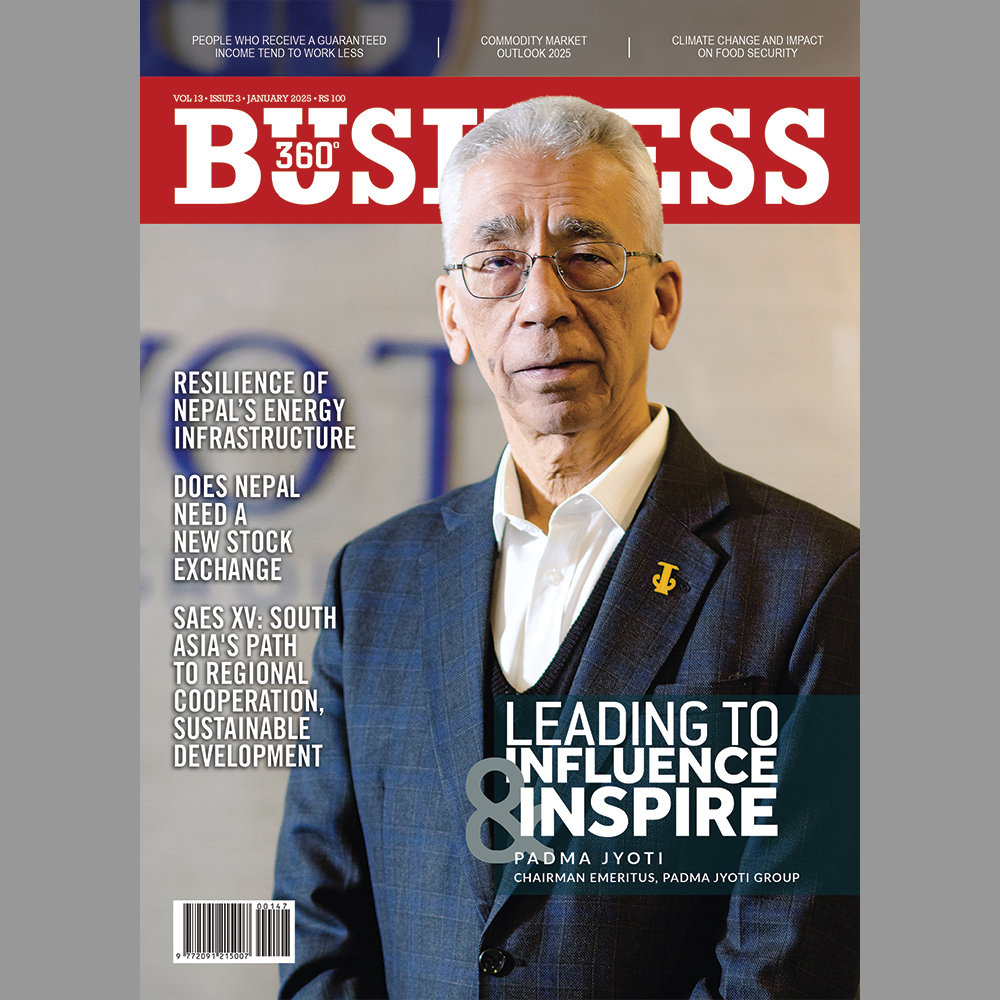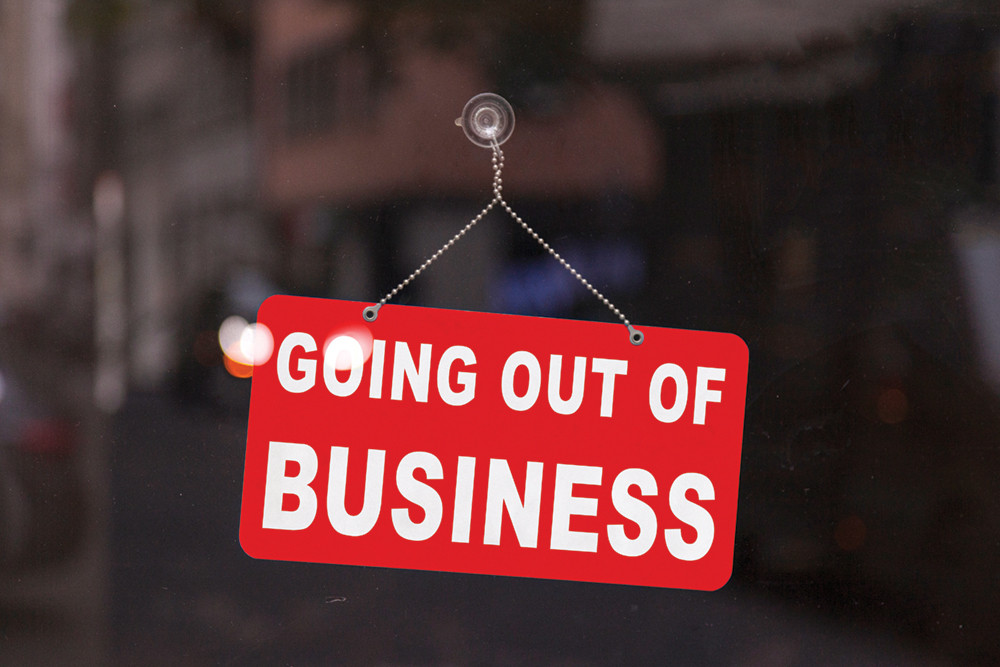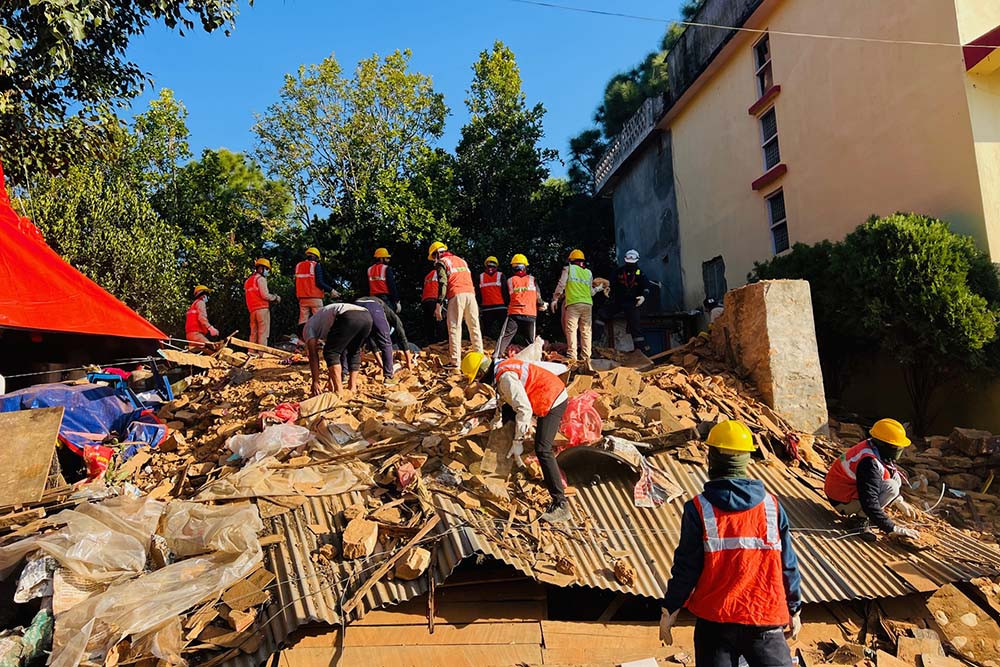
In the words of Yuval Noah Harari, money is basically trust. ‘Anything can be used as money provided that people trust it. And the value of money depends on our trust and not on actual worth of the material which money is made of. Money is in fact the most universal and the most efficient system of mutual trust ever devised’. And for centuries we have trusted and traded with physical currency like gold, silver, metal, leather, paper and even clay tablets. However, since the turn of the 21st century, that trust towards cashless form of payments has been more profound.
As the world adapts to the digital fold, cashless transaction is the new norm. Digital or cashless transaction in Nepal is still in its infancy, and while the infrastructure still has a long way to grow, the once little trust that Nepalis had on electronic and cashless payment methods is slowly changing. The outbreak of Covid 19 and the subsequent fear of using contaminated currency helped the country transition from a fully paper-cash based economy to a somewhat cashless state. Experts predicted that we would be going significantly cashless by 2036; however the rise of mobile and contactless payment methods means that the use of cash will decline much faster than previously anticipated.
Today we have more payment options in the form of digital wallets, debit cards, scan payment methods and online payment methods which is a clear indication that Nepal is taking big steps towards becoming a cashless economy. According to Nepal Rastra Bank cashless transactions increased from Rs 712 billion in 2018 to 1,559 billion on 2019. The growth is not surprising since digital payments offer ease and convenience of use.
Introduction to Cashless Economy
Cashless payment is a method of trading that involves no physical money and payment is done through the usage of credit or debit card, smartphones (QR code or e-banking) and or facial recognition. Cashless economy is the direct outcome of transactions made by merchants by using a medium other than paper cash. According to Dr. Birendra Prasad Mahato, Chairman of Machhapuchchhre Bank, “Cashless economy is the economy where all payments are made electronically. Cards, Mobile, QR, POS, Online Banking channels replaces cash completely”. According to Manish Modi, Managing Director of Khalti, “Economy has a broad term so cashless transaction is a transaction that happens without physical movement of cash. When you define cashless, it is basically paying for something without paying in actual cash in a way. So basically it’s a market place where the transaction happens digitally where there’s no cash involved; it becomes cashless in that term”. Modi continues to explain, “Cashless economy is an ecosystem where everything happens digitally like or from government payments to your credit loans to your bill payments to insurance payments. When transaction happens digitally then it becomes cashless economy. And the basic fundamental for it is a platform where you can transact digitally”. Contrary to beliefs, the idea of ‘cashless’ is not a new term in Nepal. When you refer to cashless transactions as previously defined a cashless transaction can be conducted without physical money which means card payments is basically a cashless means of transaction. In 1990 Nabil Bank introduced credit card in Nepal for the first time. Following in the mid-90s, Himalayan Bank introduced the first ATM (Automated Teller Machine) as well as telephone banking in Nepal. In 2002, Kumari Bank introduced e-banking services and in 2004 Laxmi Bank introduced SMS-banking. E-banking services and credit/ debit card payments were the initial move towards cashless transaction however only after the advancement of internet technology and the proliferation of its usage in the past two decades has the idea of total cashless transaction as a daily means for payment been fully adopted. According to data of March 2020, Management Information System (MIS) report published by Nepal Telecommunication Authority; internet penetration in Nepal has reached 72.16% of the total population. Though replacing cash as the primary form of transaction may take more time, the idea of changes and the signs of consumers adopting to more cashless means of transaction is slowly but surely catching on.Benefits of Going Cashless
It may take a few years, if not a decade for Nepal to fully adopt the concept of mobile and online banking and or digital wallet in an effort to transition from a totally cash-based economy to cashless economy. However, the newer generation who have adopted to the technology can claim that benefits of cashless economy far outweigh the drawbacks. Convenience is by far the best example one can give. The cashless payment method enables people to purchase items with a touch of a button or a swipe of the card. It basically speeds up the entire process of payment which is convenient for the purchaser. In addition, it is a much safer method to conduct transaction of larger sums since one does not require to carry physical cash with them. In addition, the geography of the country is considered an attributing factor that encourages a cashless transaction. Modi states, “The good thing about Nepal is that we have a good smartphone penetration. And the geography of Nepal suits cashless transaction because we have mountainous region which is difficult terrain to travel and which creates hindrances for physical presence for banking and financial institutions and all. I think we are ready to have a cashless economy and to support this statement the outbreak of this pandemic has proven that if we want, we can adopt the concept of cashless economy”. Sabir Bade Shrestha, Former CEO of Nabil Investment Banking adds “Even in normal circumstances (pre-Covid 19) a person had to be present physically to deliver the cash and someone had to be there to collect it. But considering our landscape, which is not always easily accessible; from a national point of view, it might be difficult to always deliver or pick up cash in a convenient manner and it can take lots of time. If we can adapt cashless economy system in rural areas, I believe we will save time, cost, stress and effort”. He continues to explain, “Imagine to conduct one simple transaction, people in rural areas have to travel long distances. With better infrastructure and systems, they can go into cashless economy and it will bring lots of positive changes in their life”. A cashless economy enables consumers to have a transparent record of their transactions which is obviously a positive. Modi states, “People are more aware about building their digital footprints and engagements and as a result they conduct transaction digitally which is deemed more trackable and more credible”. Shrestha claims, “It has lots of advantages. Obviously the economist, the tax collectors and the government would agree that it would create a lot of transparency. Since there were lots of problems in cash-based transactions such as tax evasion, lack of record or proof in court of law among others, governmenst in the West and in emerging economies have been pushing to go cashless. Cashless transactions are trackable so it helps avoid tax evasion”.Drawbacks
One of the main reasons for the popularity of digital wallets is that it offers users (via your smartphones) a quick and easy way to carry out various tasks. However, with the increase in demand of cashless transaction, there has already been and there might be more cases of a digital divide where certain sections of the population are not able to adopt to such technology either because of their age or because of their socio-economic background. In addition, cyber security has been a key issue in the country’s attempt to adopt a cashless economy. Modi expresses, “There are cases where you lose your money because of cyber-attack. I believe apart for cyber attack risk, going cashless will benefit people and the country itself”. According to Modi, cyber security is very tricky and nobody is 100% secure. “Every week we are tweaking and applying the best measures for cyber security but I believe, user awareness and education are the fundamentals. I believe that a platform provider should always have a balance between security and efficiency,” Modi continues to explain. Mahato adds, “As we go digital, we are further increasing the risk of cyber theft or hacking. Therefore, on the banks’ part, they need to make a good investment in technology and security measures to safeguard people’s money. Implementing robust systems and timely upgrading them is a must”. Mahato continues, “On the other side, customers and merchants need to be aware of potential threats. Awareness campaigns are to be increased massively to protect customers.”Is Nepal ready to go cashless?
Although Nepal is in need of infrastructural developments that would directly and indirectly support a cashless economy, much progress has been made in a short space of time. Shrestha expresses, “If someone told me five years ago that we would make such progress in the cashless sector, I wouldn’t have believed him or her. And in that context, comparatively we have caught on rather fast”. He continues to explain, “The competition between banks and vendors has helped as well. In any sector if there is a healthy competition, it would obviously help and it has happened in our case as well.” To support the statement, appropriate infrastructures have been developed in the past few years and as the rate of high internet adoption and mobile usage increases across Nepal, netizens shall adopt alternative forms of payments as well. In addition, in recent years, the payment industry in Nepal has been experiencing unprecedented growth and innovation with support from the regulatory level. As reported in a national daily, stakeholders like banks and payment system operators including card networks and financial-market-infrastructure-providers have played an important role in developing the digital payment space in Nepal. Mahato states, “Though we have introduced electronic payment channels decades ago, use of it was very slow. Access to banking services, financial literacy, awareness among people and payment infrastructures are the key to achieving a cashless economy.” Today there are multiple options available for cashless transactions, however most consumers still prefer cash transactions. Shrestha states, “My opinion is that you cannot be totally 100% cashless. It’s like saying an office can be 100% paperless which is a myth. We have seen the examples in Western countries where they have can reduced use of cash by a great deal - about 70% to 80% usage of cash is replaced by automation but there will always be that element of physical cash circulating in the economy. Because there are various categories of business, there are various classes of society where physical cash will always have more trust than a mobile notification.” According to reports by Digital Entrepreneur, pre-established patterns of behaviour and a lack of trust in digital transaction are behind consumer reluctance to fully go digital in emerging economies. This reluctance is not because of technological hindrance. The concept of actually feeling ‘hard’ cash in and for certain parts of society and certain aspects of business cannot be replaced in an instant and maybe it will take at least a couple of generations to substantially adopt cashless transaction.Covid 19: Role in Cashless Economy
Cash was already being phased out in many developed nations as citizens would opt to pay with either cards or via mobile apps. However, it is being reported that the outbreak of Covid 19 has significantly accelerated a shift towards a cashless future. The general fear over the transmission of the diseases has forced consumers to rethink how they pay. Digital payment transaction had been progressing at a slow rate in the country but due to Covid 19, it too is expected to rise. Modi claims, “If you would have asked me this question before Covid 19, I would have said it would take some time; roughly half a decade or so. But due to this pandemic, I think it has been pushed a little closer.” According to Modi, Nepal was lagging behind our neighbours when it came to adopting cashless economy, however the pandemic has changed the entire scenario. “Earlier we used to have problems to push digital transactions to people above the age of 45, but due to this pandemic we have witnessed that people are more willing to use our services. In a way I think Covid 19 has helped us build up confidence among people and as a result we are able to promote digital literacy awareness to a greater extent,” Modi concludes. Experts in the industry have expressed that due to Covid 19, the cashless ecosystem has started to evolve. “Because of the effects of the pandemic, the remittance sector, the insurance sector, schools and hospital payments and government payments have started going digital. Agents and governments have even encouraged users to use digital or online payment methods to pay for their utilities,” Modi claims. He further states, “The remittance channel started becoming digital which was a big step because Nepal Rastra Bank passed a regulation that makes it possible to use the funds sent from abroad directly to digital wallets like Khalti.” He continues to explain, “Prior to this, to get money, a person had to go to the remittance office and meet the agent, then deposit or receive the money. Now we have brought the agent to the mobile wallet and we are working with Rastra Bank to facilitate on better transaction on the depositor side where one can send funds directly from a foreign digital wallet to Khalti”. Another big segment that was brought into the digital fold was school and hospital payments. By doing this, Payments Service Providers are basically building an ecosystem for cashless economy. The outbreak of Covid 19 has had an effect on the reduction of cash being used as the main medium of exchange. Even though the majority of the population in Nepal still uses cash payment as the mode of payment, people are hesitant every time they exchange currency. The fear of paper cash being a carrier of the virus has made people more vigilant and they have opted to use other payment methods such as cards or digital mediums.Future of Cashless Economy in Nepal
Nepal adopted the concept of online payment channels relatively late but the growth in the sector has been a steady one over the last few years. Currently as more and more people are looking for more convenient alternatives to cash-payment, many experts predict that the future of cashless economy is upon us. According to Mahato, “Demonetisation in India forced people to use electronic channels. Even in Nepal, due to current pandemic and the subsequent lockdowns, use of electronic payments has increased considerably. However, millions of people are still accustomed to traditional methods of payments and are more comfortable using cash. Therefore we have a very long way to go”. Mahato continues, “The signs are encouraging. Digital payments are increasing in cities and the government is aware that in order to change the economy to cashless, it is important to succeed in financial inclusion by opening bank accounts of all the citizens and linking the bank accounts of people with their salaries and most of all increase internet penetration. For this, the government has already initiated driving and encouraging people to open bank accounts and route all transactions through banking channels only.” Modi expresses, “When the pandemic began, we were obviously scared of an uncertain future. But during the course of the lockdown our transactions have grown three fold which is tremendous. And we are seeing the positive signs because the number of other service providers are increasing and new users are adopting and accepting technology.”
Published Date: November 18, 2020, 12:00 am
Post Comment
E-Magazine
RELATED Feature





